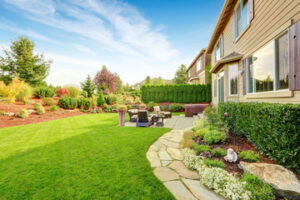A landscape designer is responsible for designing and maintaining a home’s outdoor space. This could include the front yard, backyard, street view, or fenced area. The design process involves analyzing and integrating various elements that make up the landscaping, including plant life, hardscape, and human uses. Landscaping Harrisburg PA uses computer-aided design (CAD) software to create plans and sections.
 Site analysis is an important part of the landscape design process. It allows designers to create plans that maximize the potential of any space. The site analysis process can include evaluating the site’s climate, topography, soils, vegetation and existing structures. It can also include a survey of the current condition of the land and how it was used in the past.
Site analysis is an important part of the landscape design process. It allows designers to create plans that maximize the potential of any space. The site analysis process can include evaluating the site’s climate, topography, soils, vegetation and existing structures. It can also include a survey of the current condition of the land and how it was used in the past.
The site analysis process can help the Landscaping Designer determine what type of plants will grow well in their area and how much maintenance they will require. It can also help them identify any issues that need to be addressed in their design.
A concept is a unifying theme that helps the Landscaping Designer create a design that reflects the client’s lifestyle. It also serves as the foundation for future design revisions.
One of the most basic principles in landscape design is proportion. The size of elements should be proportional to the space they occupy, creating balance and harmony between the various areas.
Another principle is order. The placement of plant groups and hardscapes should follow a consistent pattern and be organized around a central feature or focal point.
Proportion, order and repetition are all basic design principles that can help the Landscaping Designer achieve a successful project. By following these guidelines, the Landscaping Designer will be able to make their designs look beautiful, functional and sustainable.
Plant selection can help you create a harmonious design and maintain the integrity of the site. It is a vital first step in any landscape project.
Whether the landscaping project involves a small garden or a large estate, selecting the right plant for the right place is key to a successful landscape. Failure to do so can result in increased maintenance or the failure of installed plant material.
The selection process is based on functional uses, aesthetic plant characteristics and site or environmental conditions.
Aesthetic plant characteristics include form, color, texture, and size. These qualities provide a foundation for creating the desired effect and serve as visual reference points.
Light exposure is also an important consideration in selecting plants. Daily and seasonal variations in available sunlight can affect plant choices.
Budgeting can be time consuming, but it’s one of the best things you can do for your landscape business. It helps you plan your future, keep track of your expenses and decide if you should scale up or slow down.
It also gives you a sense of whether you’re on track or if your business is on track. It’s better to know your numbers now than to be caught in a hole later when it’s too late to pull out a shovel.
When designing a landscape, it’s important to strike the balance between aesthetics, functionality and costs. A good designer will help you achieve this by assessing the project’s overall design and making informed decisions that make the most sense for your desired outcomes.
Using their design education, advanced horticultural knowledge, and drafting skills, a Landscaping Designer creates a plan to bring your vision for your outdoor space to life. This will include hardscaping and softscaping elements such as walkways, retaining walls, patio surfaces, and landscaping.
The plan also illustrates how the designer’s ideas meet your goals and priorities. This gives you the chance to discuss and provide feedback.
Depending on the size of your project, it can take weeks or months to complete a full landscape plan. During this time, your landscaper can make revisions to ensure the plan meets your budget and any limitations imposed by your site.
The goal of landscaping is to create an attractive, functional outdoor space that complements the natural surroundings and meets the needs and preferences of the homeowner or property owner. Landscaping can enhance the visual appeal of a property, create a relaxing and enjoyable outdoor environment, and increase the value of the property.
